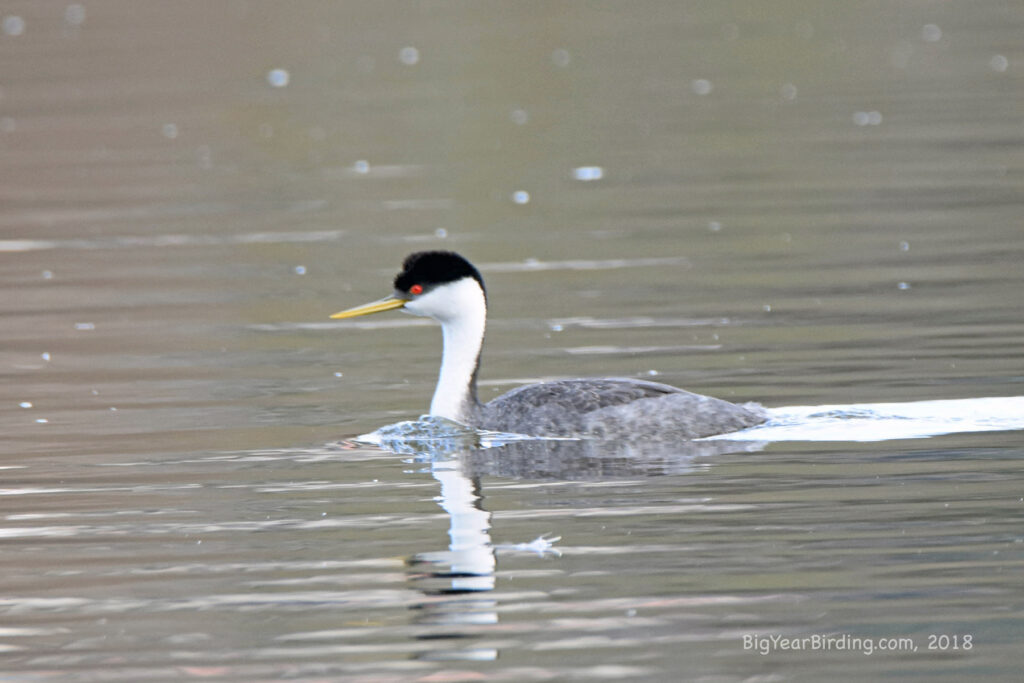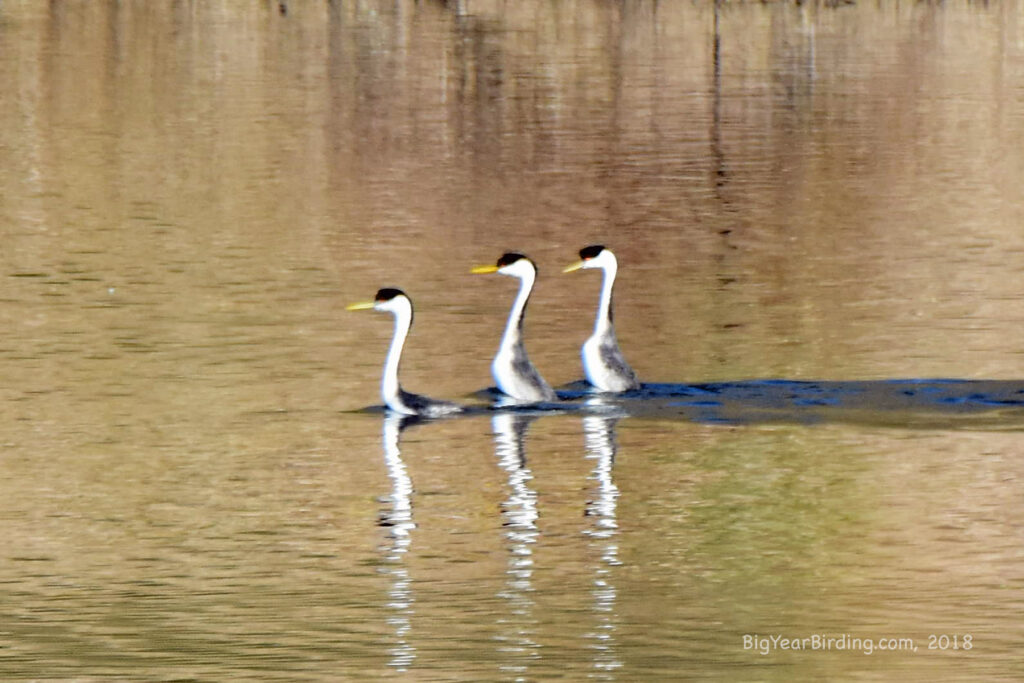
The Western Grebe (Aechmophorus occidentalis) is a graceful waterbird that inhabits freshwater lakes and rivers throughout western North America. These birds measure 20-29 inches (50-74 cm) in length and weigh between 1.5-3.5 pounds (680-1588 grams). They are easily distinguished by their long necks, slender bills, and distinctive black and white plumage.

During breeding season, Western Grebes display an extravagant courtship behavior known as “rushing.” This involves two birds rushing across the water with their necks stretched out, feet paddling furiously, and wings held high. The rush ends with the birds colliding chest-to-chest before diving underwater together. This display is often accompanied by a series of trills, whinnies, and yodels.
Western Grebes are migratory birds that breed in freshwater lakes throughout western North America from March to July. They then migrate to coastal areas and larger bodies of water to spend the winter months. Some birds will travel as far south as Mexico and Central America, while others remain in the Pacific Northwest.
The Western Grebe’s diet consists mainly of fish, including carp, perch, and trout. They are skilled swimmers and divers, using their strong legs to propel themselves underwater in search of prey. Western Grebes can dive to depths of up to 100 feet (30 meters) and remain underwater for up to 4 minutes.

Despite their graceful appearance, Western Grebes face numerous threats. Habitat loss, pollution, and disturbance from human activity are major factors in their declining populations. Efforts are underway to protect critical breeding and wintering habitats and to reduce human impacts on these birds. By working together, we can help ensure that Western Grebes continue to thrive for generations to come.

